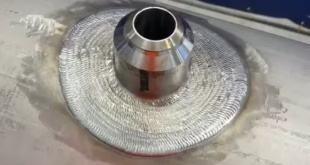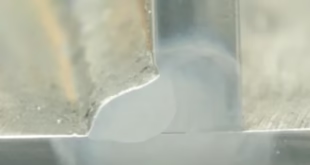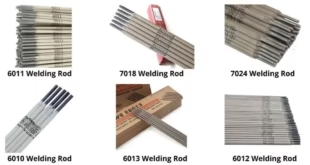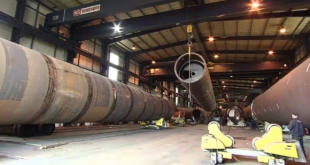How to Choose the Right Welding Process for Your Project
Introduction
Selecting the appropriate welding process is a critical decision that directly affects the outcome of a welding project. With various welding techniques available, it is essential to understand the factors that influence the choice of welding process. By considering the project requirements, material type, joint configuration, and other crucial variables, one can determine the most suitable welding process for their specific job.
Whether you are a beginner looking for the most recommended welding process or an experienced welder seeking guidance on selecting the strongest welding method, this guide will equip you with the knowledge necessary to make an informed decision. By understanding the key considerations and evaluating the specific requirements of your project, you can ensure successful welds that meet the highest standards of quality, durability, and safety. So, let us delve into the world of welding processes and discover how to choose the right one for your project.
Factors that influence the choice of welding process
Several factors need to be considered when selecting a welding process for your project:
- Material type: The type of material being welded is a significant consideration. Different welding processes are better suited for specific materials, such as steel, aluminum, or stainless steel. Each material has unique characteristics that require specific welding techniques and processes to achieve optimal results.
- Thickness of the material: The thickness of the material being welded is important because it affects the heat input required. Thicker materials may require welding processes with higher heat input or deeper penetration capabilities, while thinner materials may need processes with lower heat input to prevent distortion or burn-through.
- Welding position: Consider the position in which the weld needs to be performed. Some welding processes are better suited for certain positions, such as overhead, vertical, or horizontal welding. Certain processes offer better control and accessibility in specific positions, ensuring consistent and high-quality welds.
- Joint type: The joint configuration plays a role in determining the appropriate welding process. Different welding processes are better suited for specific joint types, such as butt joints, lap joints, or fillet joints. The joint design impacts the accessibility, penetration, and overall strength of the weld.
- Production requirements: Consider the production requirements for your project, such as the desired welding speed, efficiency, and volume. Some processes offer higher deposition rates and faster welding speeds, making them suitable for high-volume production environments. However, for specialized or intricate projects, processes with greater control and precision may be more appropriate.
- Cost: Evaluate the cost implications of different welding processes. Consider factors such as equipment, consumables, and operational costs. Some processes require specialized equipment or consumables, which may have higher upfront costs or ongoing expenses. Balancing the cost with the desired quality and productivity is essential.
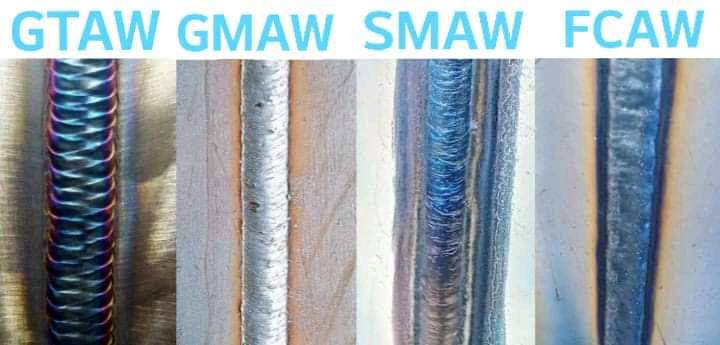
Assessing Project Requirements
Determining the project specifications and goals
Clearly define the project requirements, including the desired outcome, quality standards, and any specific industry or code requirements that need to be met. This will help you narrow down the welding processes that align with your project objectives.
Evaluating the material type, thickness, and joint configuration
Thoroughly examine the material specifications, including its type, grade, and any specific considerations for that material. Assess the thickness of the material to determine the appropriate welding process for adequate penetration and heat control. Analyze the joint configuration to understand the complexity and accessibility for the chosen welding processes.
Identifying any specific industry or code requirements
Certain industries or applications have specific welding codes, standards, or certifications that need to be followed. Ensure that the chosen welding process complies with these requirements and that the welds meet the necessary quality and structural integrity standards.
Understanding Different Welding Processes
MIG (Metal Inert Gas) Welding
MIG welding uses a consumable wire electrode and an inert gas shield to protect the weld pool. It offers high welding speeds, excellent productivity, and is suitable for various materials, including mild steel, stainless steel, and aluminum. MIG welding is relatively easy to learn and provides good control over the weld pool.
TIG (Tungsten Inert Gas) Welding
TIG welding utilizes a non-consumable tungsten electrode and an inert gas shield. It provides precise control over the welding process, making it suitable for high-quality welds on various materials, including stainless steel, aluminum, and exotic alloys. TIG welding offers excellent control of heat input, produces clean and aesthetically pleasing welds, and allows for welding in various positions.
Stick Welding (Shielded Metal Arc Welding)
Stick welding involves using a consumable electrode coated with a flux that provides shielding during the welding process. It is a versatile process suitable for welding a wide range of materials, including carbon steel, stainless steel, and cast iron. Stick welding is known for its portability, ability to work in outdoor or adverse conditions, and deep penetration capabilities.
Flux-Cored Arc Welding
Flux-Cored Arc Welding (FCAW) utilizes a continuously fed tubular electrode with a flux core that provides shielding and produces a protective gas when melted. It offers high deposition rates, good penetration, and is suitable for welding thick materials. FCAW is commonly used in construction, shipbuilding, and heavy fabrication industries.
Selecting the Right Welding Process
Matching welding processes with project requirements
Evaluate the project requirements, including material type, thickness, joint configuration, production needs, and cost considerations. Compare these requirements with the characteristics and advantages of each welding process to determine the most suitable one for your project.
Considering factors such as material type, thickness, and joint configuration
Review the material type and its compatibility with different welding processes. Consider the thickness of the material and select a welding process capable of achieving the required penetration and heat control. Assess the joint configuration and choose a process that offers accessibility and ensures strong and reliable welds.
Analyzing the pros and cons of each welding process
Evaluate the advantages and disadvantages of each welding process in relation to your project requirements. Consider factors such as welding speed, ease of use, quality of welds, and equipment costs. Compare these factors to make an informed decision about the most suitable welding process.
Consulting with welding professionals or experts, if necessary
If you are unsure about the best welding process for your project, seek advice from experienced welding professionals or experts. They can provide valuable insights and recommendations based on their expertise and knowledge of specific applications.
Additional Considerations
Equipment availability and accessibility
Consider the availability of welding equipment and the necessary accessories for the chosen welding process. Ensure that the equipment is accessible, reliable, and suitable for your project requirements.
Operator skill level and experience
Evaluate the skill level and experience of the operators who will be performing the welds. Some welding processes may require more training and experience to achieve optimal results. Choose a process that matches the skill level of your welding team or consider providing additional training if needed.
Cost considerations and budget constraints
Take into account the overall cost of the welding process, including equipment, consumables, maintenance, and operational costs. Ensure that the chosen process aligns with your budget constraints while still meeting the project requirements.
Safety precautions and protective measures
Prioritize safety by implementing appropriate safety precautions and providing operators with the necessary personal protective equipment (PPE). Different welding processes may require specific safety measures, such as proper ventilation, eye protection, or respiratory protection.
FAQs
What is the most recommended welding process for beginners?
The most recommended welding process for beginners is usually MIG (Metal Inert Gas) welding. It is relatively easy to learn and offers good control over the welding process. MIG welding also provides high welding speeds and can be used on a variety of materials.
What are the 5 variables that are used to determine the welding process selected for a specific job?
The five variables used to determine the welding process for a specific job are: a) Material type b) Thickness of the material c) Joint configuration d) Welding position e) Desired quality and productivity requirements
What is the most important factor in welding?
The most important factor in welding is achieving a sound and strong weld joint. This includes proper penetration, fusion between the base metals, and ensuring the weld meets the required quality standards for strength and integrity.
Which welding method is strongest?
The strength of a weld joint depends on various factors, including the welding process used, the skill of the welder, and the specific application. Generally, processes like TIG (Tungsten Inert Gas) welding and submerged arc welding are known for producing strong and high-quality welds.
How do you test the quality of welding?
The quality of welding can be tested through various methods, including visual inspection, non-destructive testing (NDT) techniques such as radiographic testing, ultrasonic testing, dye penetrant testing, and destructive testing methods like tensile testing or bend testing.
What are the four important welding processes?
The four important welding processes are MIG (Metal Inert Gas) welding, TIG (Tungsten Inert Gas) welding, stick welding (Shielded Metal Arc Welding), and flux-cored arc welding (FCAW).
Which welding is weakest?
The strength of a weld depends on several factors, including the welding process, material, and skill of the welder. However, welds produced by oxy-acetylene welding are generally considered to be weaker compared to other welding processes.
What is the weakest type of weld?
The weakest type of weld is typically a cold weld. Cold welding occurs when there is insufficient heat or improper fusion between the base metals, resulting in a weak and unreliable joint.
What metal is hardest to weld?
Certain metals and alloys can be more challenging to weld due to their unique properties. Some of the metals that are considered difficult to weld include titanium, aluminum, and high-strength steels.
What is a QC in welding?
QC stands for Quality Control in welding. It refers to the processes and procedures implemented to ensure that the welding work meets the required quality standards and specifications. QC includes inspections, tests, and documentation to verify the integrity and quality of welds.
How do you calculate weld strength?
Weld strength is typically determined by conducting destructive testing, such as tensile testing or bend testing, on the weld sample. The test results provide information about the weld’s ultimate strength, yield strength, and elongation, which are used to assess its overall strength.
What is NDT in welding?
NDT stands for Non-Destructive Testing in welding. It involves the use of various inspection techniques to evaluate the quality and integrity of welds without causing damage to the welded structure. NDT methods include radiographic testing, ultrasonic testing, magnetic particle testing, and dye penetrant testing.
Conclusion
In conclusion, choosing the right welding process for your project can make a significant impact on the quality, durability, and safety of your finished product. As discussed, there are several factors to consider, such as material type, thickness, joint type, welding position, and the skill level of the welder. It is important to do your research and consult with a welding expert to determine the best welding process for your specific project. With the right welding process and proper techniques, you can achieve a strong, high-quality weld that meets your project’s requirements and stands the test of time.
welding process, choosing the right process, welding techniques, welding equipment, project requirements, material type, joint configuration, welding positions, MIG welding, TIG welding, stick welding, flux-cored arc welding, welding considerations, welding factors, welding selection, welding industry, welding standards, welding codes, welding professionals, welding expertise, welding safety, welding process selection, project-specific welding, material compatibility, joint design, welding position suitability, MIG welding advantages, TIG welding benefits, stick welding strengths, flux-cored arc welding applications, welding cost analysis, welding equipment availability, operator skill level, welding safety precautions, welding standards compliance, welding professionals’ advice.
 Welding of Welders All about Welding and Welders
Welding of Welders All about Welding and Welders
